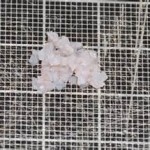Cartilage is the best type of graft or augmentation material to use in rhinoplasty. For most rhinoplasties the preference for donor site harvest is the septum, ear and then the rib. When the septum is inadequate the ear or conchal cartilage is the back up donor site. While the ear may be able to provide adequate cartilage for the procedure, its biggest drawback is that the cartilage is curved and non-straight. The use of ear cartilage in the nasal tip is usually satusfactory because the shape of the graft is somewhat similar to the curved shape of the tip cartilages. However it is problematic to use on the dorsum or radix of the nose where straightness of the graft is key.

In the June 2015 issue of the journal Plastic and Reconstructive Surgery, the article entitled ‘Use of Diced Conchal Cartilage with Perichondrial Attachment in Rhinoplasty’ was published. In this clinical series almost 40 Asian patients were reviewed that had dorsal augmentation in their open rhinoplasty using a diced ear cartilage graft with perichondrial attachment. In this cartilage graft method the ear cartilage maintained one side of the perichondrium. The graft was then sliced into 0.5mm to 1mm cubes while maintaining this perichondrial attachment. This created a natural straightening of the curved lump of graft tissue. Nearly 60% of the patients had the ear cartilage graft alone while the remaining number had it combined with other grafting methods including cadaveric fascia and thin Gore-tex sheets. Their results showed that about 90% of the patients had satisfactory aesthetic outcomes. One patient developed a keloid in the ear from the incision.
This rhinoplasty ear grafting technique allows more productive use of this problematic donor site for some patients. By keeping the perichondrial attachment the diced cartilage graft avoids the needs for te harvesting of fascia to help contain it. Its limitations are that it still only provides a limited amount of graft material and is best used when only a small area of dorsal concavity needs to be filled/augmented. Because of the thickness of the ear cartilage it works best in thicker skinned nose (like the Asian patients in this study) where any graft irregularities are better covered.
Dr. Barry Eppley
Indianapolis, Indiana


